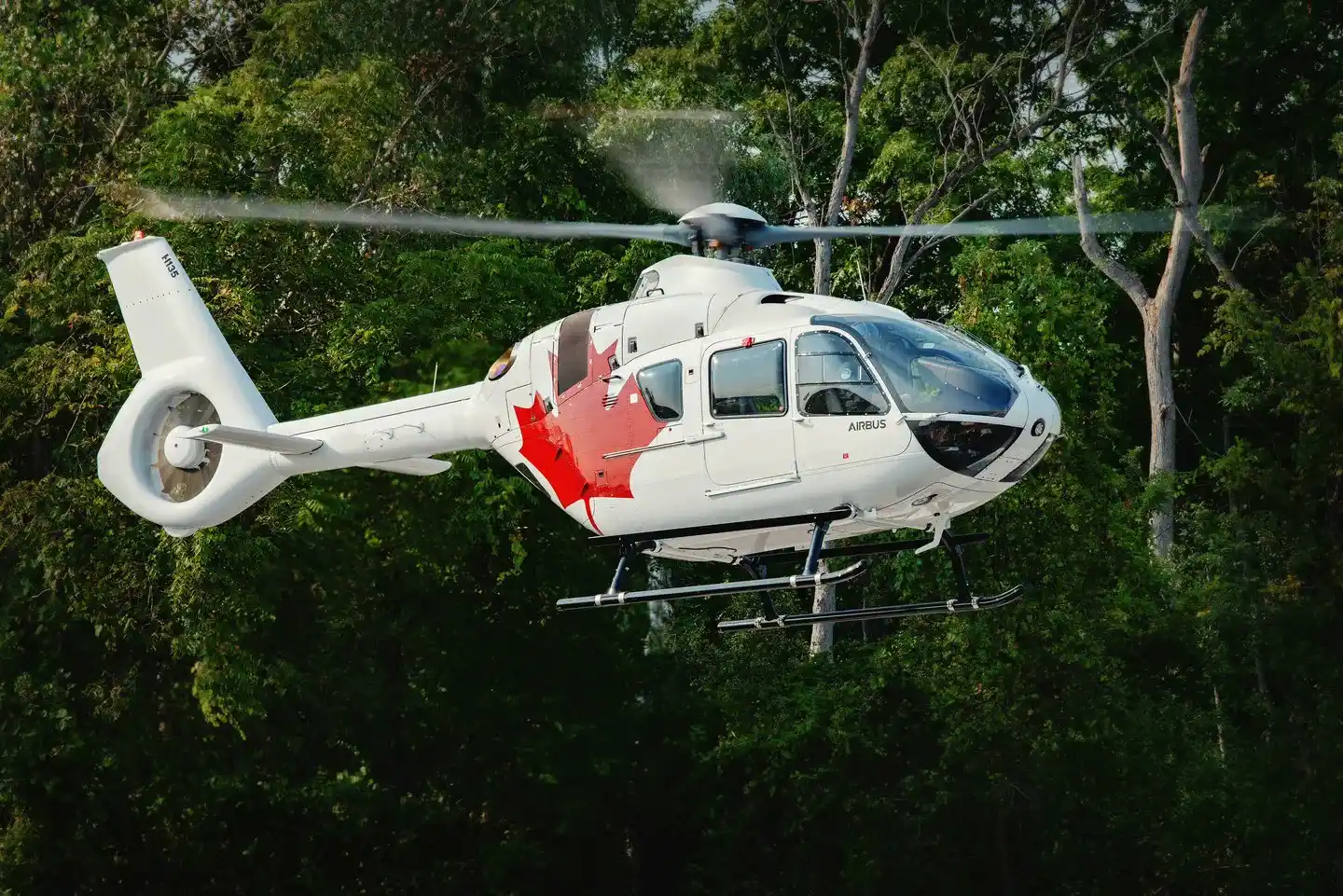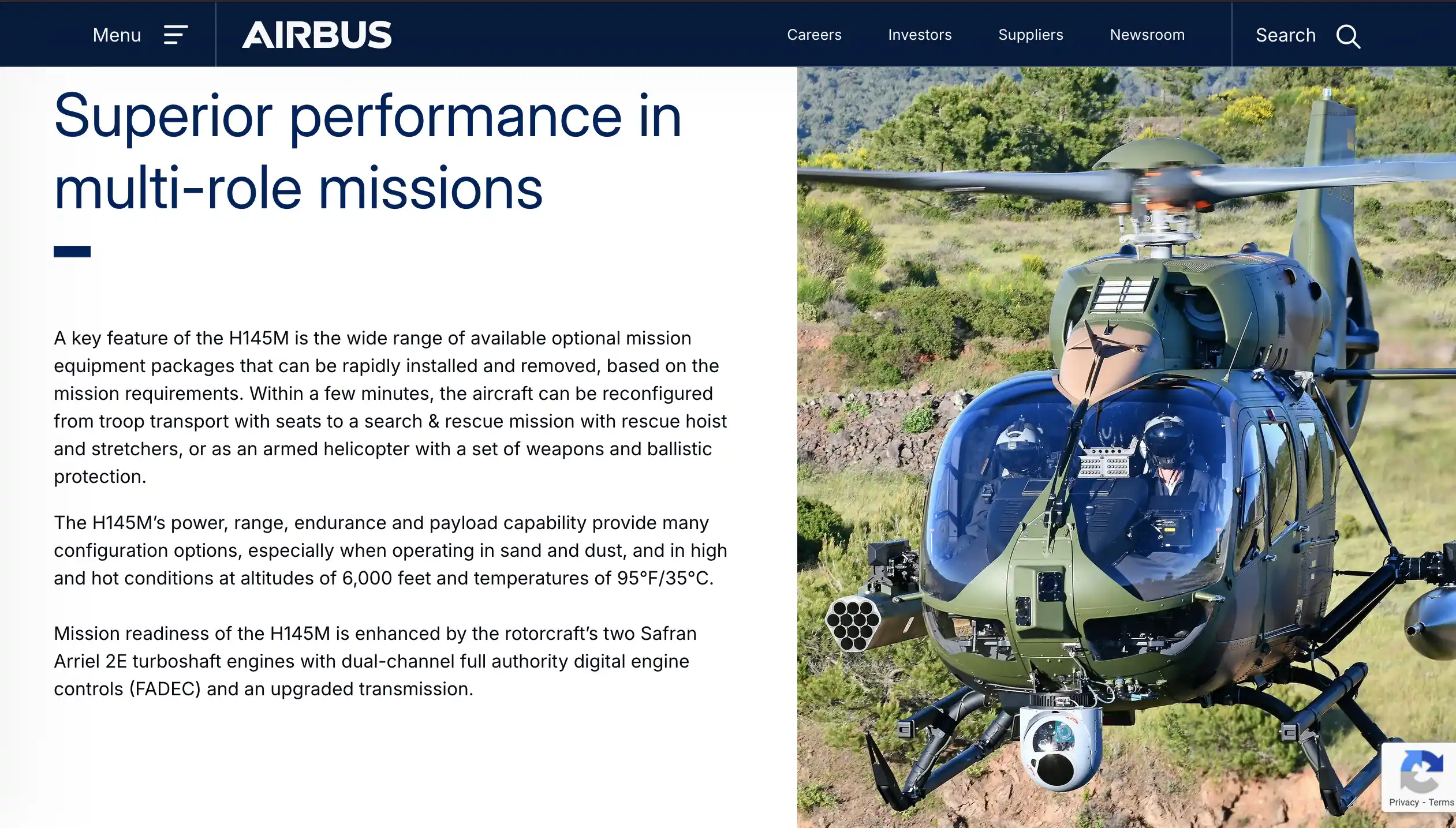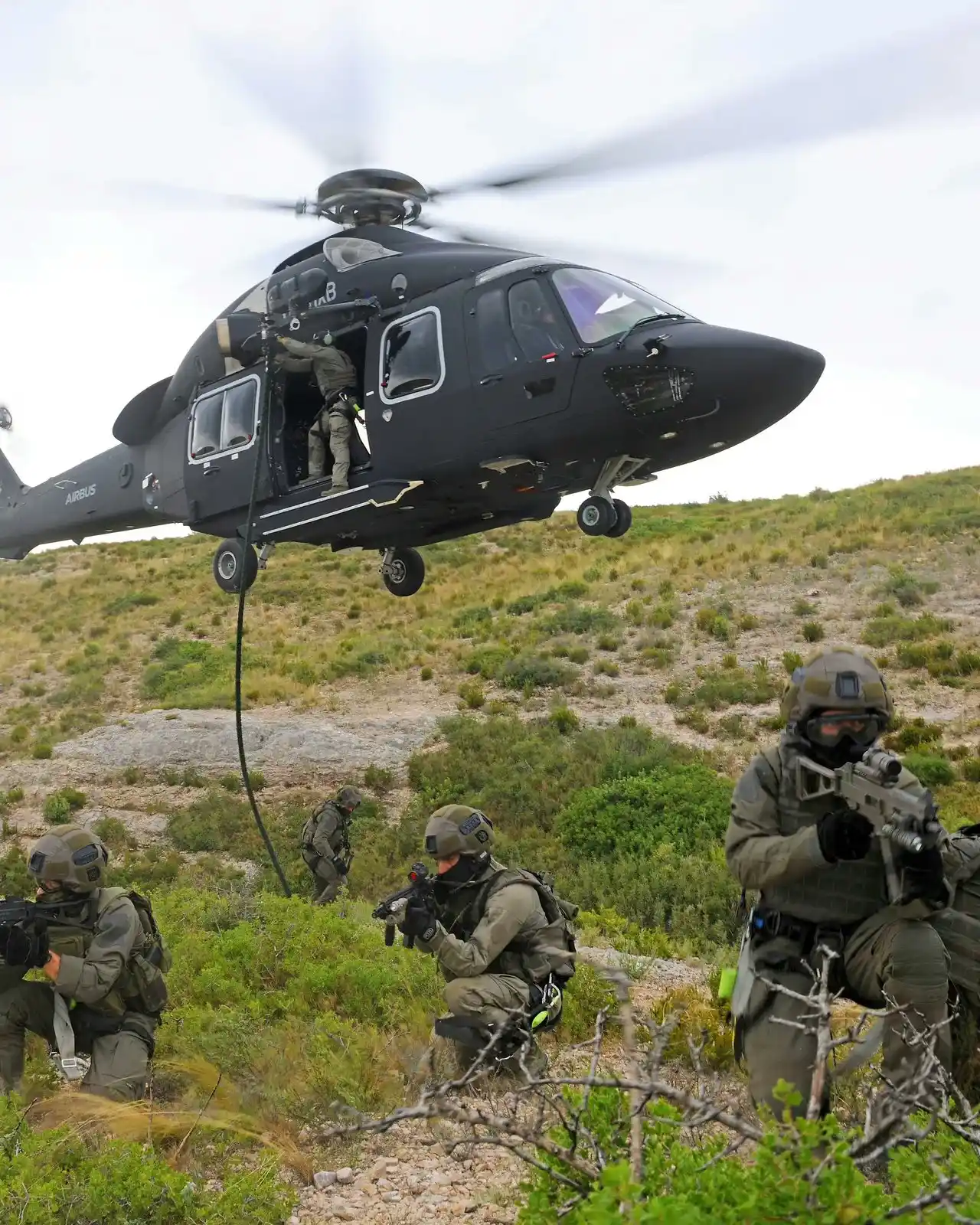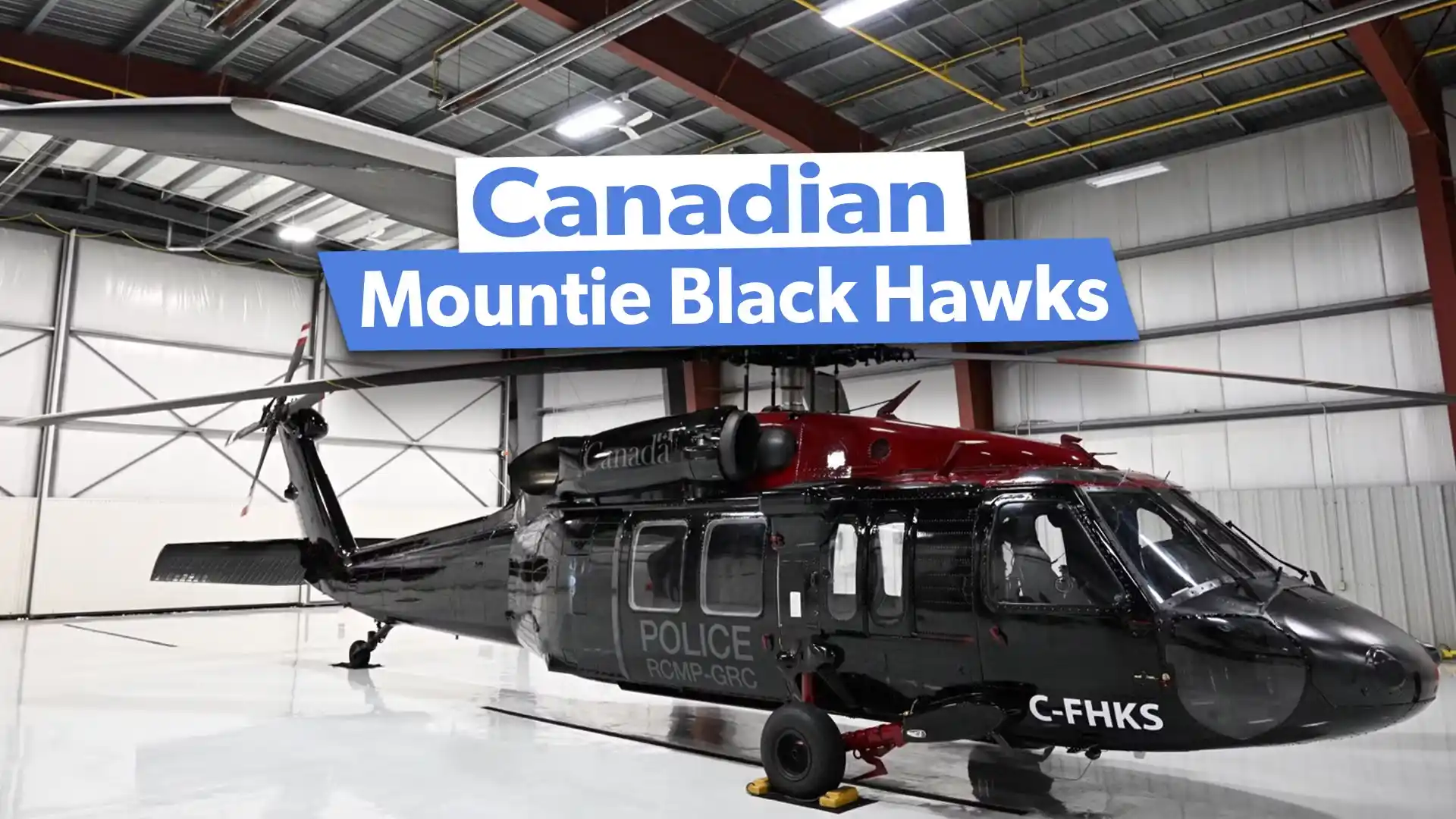Preamble: Canada’s Future from 2025 to 2050 and Beyond
-
UH‑60M Black Hawk (Modernized International Variant)
-
Airbus H145 (light utility, unarmed)
-
Airbus H145M (armed light utility)
-
Airbus H175M (medium‑lift armed variant)
Threat Domain Analysis with Ratings (1 to 10 Stars)
-
Conventional Geopolitical Conflicts (e.g., WWIII, state-sponsored aggression)
-
UH‑60M Black Hawk: ★★★★★★★★★★ (10/10) Heavy‑lift, troop transport, and integrated armaments give it unmatched combat support capabilities.
-
Airbus H145: ★★★★☆☆☆☆☆☆ (4/10) Limited payload and transport capacity restrict its use in large‑scale conflicts.
-
Airbus H145M: ★★★★★★☆☆☆☆ (6/10) Armed variant improves combat capability but still lacks heavy‑lift and troop transport.
-
Airbus H175M: ★★★★★★★☆☆☆ (7/10) Offers medium‑lift capacity, yet still falls short of the Black Hawk’s robust performance.
-
-
Hybrid Warfare & Autonomous/AI-Driven Threats
-
UH‑60M Black Hawk: ★★★★★★★★★★ (10/10) Advanced avionics, sensor suites, and modular upgrade potential make it ideal for multi‑domain threats.
-
Airbus H145: ★★★★★☆☆☆☆☆ (5/10) Basic sensor integration and limited modularity hinder its effectiveness.
-
Airbus H145M: ★★★★★★☆☆☆☆ (6/10) Armed and slightly better equipped than the H145, yet constrained by a smaller airframe.
-
Airbus H175M: ★★★★★★★☆☆☆ (7/10) Improved capacity and range over the H145 series, but still less adaptable than the Black Hawk.
-
-
Mass Migrations & Organized Crime
-
UH‑60M Black Hawk: ★★★★★★★★★★ (10/10) Capable of transporting large numbers of troops and heavy equipment swiftly.
-
Airbus H145: ★★★☆☆☆☆☆☆☆ (3/10) Insufficient capacity for high‑threat scenarios involving mass migration.
-
Airbus H145M: ★★★★☆☆☆☆☆☆ (4/10) Armed variant improves capabilities marginally but remains limited in payload.
-
Airbus H175M: ★★★★★☆☆☆☆☆ (5/10) Medium‑lift capability offers some advantage, yet still below the Black Hawk’s performance.
-
-
Environmental & Ecological Crises (e.g., extreme weather, flooding)
-
UH‑60M Black Hawk: ★★★★★★★★★★ (10/10) Extended range and heavy‑lift capacity support large‑scale disaster response effectively. Airbus H145: ★★★★☆☆☆☆☆☆ (4/10) Limited range and payload restrict its usefulness in extensive disaster scenarios. Airbus H145M: ★★★★★★☆☆☆☆ (5/10) Some improvements with armament; still limited compared to the Black Hawk. Airbus H175M: ★★★★★★★☆☆☆ (6/10) Better capacity than the H145 variants, but overall still modest in heavy‑lift performance.
-
-
Technological & Scientific Risks (e.g., nuclear, biotech, uncontrolled AI)
-
UH‑60M Black Hawk: ★★★★★★★★★★ (10/10) Rugged design and spacious cabin allow integration of specialized systems for hostile environments.
-
Airbus H145: ★★★★☆☆☆☆☆☆ (4/10) Limited integration potential for specialized equipment.
-
Airbus H145M: ★★★★★★☆☆☆☆ (5/10) Enhanced features relative to the unarmed version, but still constrained.
-
Airbus H175M: ★★★★★★★☆☆☆ (6/10) Better capacity for integration, yet not matching the Black Hawk’s overall robustness.
-
-
Economic, Political & Social Instabilities (e.g., civil unrest)
-
UH‑60M Black Hawk: ★★★★★★★★★★ (10/10) Heavy‑lift and rapid troop transport enable swift intervention and stabilization.
-
Airbus H145: ★★★★☆☆☆☆☆☆ (4/10) Limited capabilities for large‑scale interventions.
-
Airbus H145M: ★★★★★★☆☆☆☆ (5/10) Armed variant improves utility, but still falls short of robust deployment needs.
-
Airbus H175M: ★★★★★★★☆☆☆ (6/10) Offers moderate lift and capacity, yet cannot match the Black Hawk in major crises.
-
-
Health Crises & Pandemics
-
UH‑60M Black Hawk: ★★★★★★★★★★ (10/10) Rapid deployment of large medical teams and supplies is essential in widespread crises.
-
Airbus H145: ★★★☆☆☆☆☆☆☆ (3/10) Small capacity limits its effectiveness in mass medical evacuations.
-
Airbus H145M: ★★★★☆☆☆☆☆☆ (4/10) Slightly better with armaments, but still constrained.
-
Airbus H175M: ★★★★★☆☆☆☆☆ (5/10) Improved capacity offers some advantage, yet still modest compared to the Black Hawk.
-
-
Space & Astronomical Threats (e.g., asteroid impacts, severe space weather)
-
UH‑60M Black Hawk: ★★★★★★★★★★ (10/10) Long‑range and high‑endurance are crucial for coordinating large‑scale emergency responses.
-
Airbus H145: ★★★★☆☆☆☆☆☆ (4/10) Limited range restricts its utility in vast emergency scenarios.
-
Airbus H145M: ★★★★★★☆☆☆☆ (5/10) Better than the unarmed variant, yet still not comparable to the Black Hawk.
-
Airbus H175M: ★★★★★★★☆☆☆ (6/10) Improved range and lift provide an edge over H145 variants but remain below the Black Hawk.
-
-
Resource Scarcity & Infrastructure Collapse
-
UH‑60M Black Hawk: ★★★★★★★★★★ (10/10) Superior payload and range enable it to transport heavy equipment and rescue personnel over long distances.
-
Airbus H145: ★★★☆☆☆☆☆☆☆ (3/10) Limited lift capacity makes it unsuitable for large-scale resource transport.
-
Airbus H145M: ★★★★☆☆☆☆☆☆ (4/10) Armed variant offers slight improvement, but still limited in capacity.
-
Airbus H175M: ★★★★★☆☆☆☆☆ (5/10) Moderate lift capability provides some benefit, yet it remains insufficient compared to the Black Hawk.
-
-
The Great Filter & Existential Multi‑Domain Crises
-
UH‑60M Black Hawk: ★★★★★★★★★★ (10/10) Its unmatched versatility, modular upgrade potential, and multi‑role performance make it the only viable platform for existential threats.
-
Airbus H145: ★★★★☆☆☆☆☆☆ (4/10) Limited adaptability renders it ineffective in multi‑domain crises.
-
Airbus H145M: ★★★★★★☆☆☆☆ (5/10) Enhanced over H145 but still far behind the Black Hawk’s capabilities.
-
Airbus H175M: ★★★★★★★☆☆☆ (6/10) Improved over H145 variants yet insufficient for the comprehensive demands of multi‑domain crises.
-
-
Cybersecurity & Digital/Information Threats (Indirect Impacts)
-
UH‑60M Black Hawk: ★★★★★★★★★★ (10/10) Advanced network‑centric capabilities and secure digital systems ensure seamless integration with modern defense infrastructures.
-
Airbus H145: ★★★★☆☆☆☆☆☆ (4/10) Basic systems limit its effectiveness in an interconnected digital battlefield.
-
Airbus H145M: ★★★★★★☆☆☆☆ (5/10) Enhanced integration is present, but still lags behind the Black Hawk.
-
Airbus H175M: ★★★★★★★☆☆☆ (6/10) Moderate digital capabilities offer some advantage, yet overall performance remains below that of the Black Hawk.
-
-
Urban Surveillance & Infrastructure Monitoring
-
UH‑60M Black Hawk: ★★★★★★★★★★ (10/10) Even in urban settings, its robust resilience, extended endurance, and heavy‑armament capacity give it a decisive advantage in high‑threat scenarios.
-
Airbus H145: ★★★★★★★☆☆☆ (7/10) Agility and lower operating costs favour routine surveillance but are limited in high‑threat escalation.
-
Airbus H145M: ★★★★★★★☆☆☆ (7/10) Armed capability improves its utility in urban conflict, though it still lacks the overall capacity of the Black Hawk.
-
Airbus H175M: ★★★★★★★☆☆☆ (7/10) Comparable to the H145M in urban scenarios but still falls short in high‑intensity, extended missions.
-
Total Score Calculation
-
UH‑60M Black Hawk: 12 domains × 10 = 120 points
-
Airbus H145: 4 + 5 + 3 + 4 + 4 + 4 + 3 + 4 + 3 + 4 + 4 + 7 = 49 points
-
Airbus H145M: 6 + 6 + 4 + 5 + 5 + 5 + 4 + 5 + 4 + 5 + 5 + 7 = 61 points
-
Airbus H175M: 7 + 7 + 5 + 6 + 6 + 6 + 5 + 6 + 5 + 6 + 6 + 7 = 72 points
Final Conclusion
Final Winner: UH‑60M Black Hawk (Modernized International Variant)
Appendices: Technical Specifications
Appendix A: UH‑60M Black Hawk
-
Crew: 3 (Pilot, Co‑pilot, Crew Chief)
-
Troop/Passenger Capacity: 11–14 fully equipped soldiers
-
Maximum Takeoff Weight: ~22,000 lb (10,000 kg)
-
Engine Type: Twin turboshaft engines (e.g., Rolls‑Royce T700‑GE‑701D)
-
Power Output: ~2,000 shp per engine
-
Maximum Speed: ~183 mph (295 km/h)
-
Range: ~360 nautical miles (667 km)
-
Armament Capability: Configurable with door‑mounted machine guns, rocket pods, and anti‑tank missiles
-
Avionics: Modern digital cockpit with advanced radar, FLIR, and network‑centric communications
-
Dimensions: Length: ~64 ft (19.5 m) Rotor Diameter: ~53 ft (16.2 m) Height: ~16.7 ft (5.1 m)
-
Upgradability: Modular design for integration of counter‑drone systems, electronic warfare packages, and mission‑specific enhancements
-
Operational Role: Multi‑role utility for troop transport, heavy‑lift, medical evacuation, direct combat support, and ISR operations
Appendix B: Airbus H145
-
Crew: 2 (Pilot, Co‑pilot)
-
Troop/Passenger Capacity: Up to 6 passengers
-
Maximum Takeoff Weight: ~11,000 lb (5,000 kg)
-
Engine Type: Twin turboshaft engines (e.g., Safran Arriel 2D)
-
Power Output: ~1,400 shp (combined)
-
Maximum Speed: ~161 mph (259 km/h)
-
Range: ~270 nautical miles (500 km)
-
Armament Capability: Typically unarmed; optionally configurable for light armaments
-
Avionics: Modern digital cockpit with advanced sensor systems and integrated communications
-
Dimensions: Length: ~44 ft (13.4 m) Rotor Diameter: ~34 ft (10.4 m) Height: ~12 ft (3.7 m)
-
Upgradability: Limited modularity; designed for light utility and ISR roles
-
Operational Role: Light utility for surveillance, law enforcement, and short‑range troop transport
Appendix C: Airbus H145M
-
Crew: 2 (Pilot, Co‑pilot)
-
Troop/Passenger Capacity: Up to 6 passengers
-
Maximum Takeoff Weight: ~11,000 lb (5,000 kg)
-
Engine Type: Twin turboshaft engines (e.g., Safran Arriel 2D)
-
Power Output: ~1,400 shp (combined)
-
Maximum Speed: ~161 mph (259 km/h)
-
Range: ~270 nautical miles (500 km)
-
Armament Capability: Configurable for door‑mounted machine guns, rocket pods, and light precision‑guided munitions
-
Avionics: Modern digital cockpit with advanced sensor systems and integrated communications
-
Dimensions: Length: ~44 ft (13.4 m) Rotor Diameter: ~34 ft (10.4 m) Height: ~12 ft (3.7 m)
-
Upgradability: Enhanced modularity for military applications relative to the unarmed H145
-
Operational Role: Armed light utility for reconnaissance, law enforcement, and short‑range ISR with combat capabilities
Appendix D: Airbus H175M
-
Crew: 2 (Pilot, Co‑pilot)
-
Troop/Passenger Capacity: Up to 12 passengers or equivalent personnel
-
Maximum Takeoff Weight: ~15,000 lb (6,800 kg) [Approximate]
-
Engine Type: Twin turboshaft engines (e.g., Pratt & Whitney PW207C or Safran Arriel 2S2)
-
Power Output: ~1,800 shp per engine (approximate)
-
Maximum Speed: ~155 mph (250 km/h)
-
Range: ~310 nautical miles (575 km)
-
Armament Capability: Configurable for door‑mounted machine guns, rocket pods, and light precision‑guided munitions (armed variant)
-
Avionics: Modern digital cockpit with advanced sensors and integrated communications systems
-
Dimensions:Length: ~48 ft (14.6 m) [Approximate] Rotor Diameter: ~41 ft (12.5 m) [Approximate] Height: ~14 ft (4.3 m) [Approximate]
-
Upgradability: Moderate modularity for integration of mission‑specific systems
-
Operational Role: Multi‑role medium‑lift utility for troop transport, light combat support, and short‑to‑medium range ISR operations
Final Winner: UH‑60M Black Hawk (Modernized International Variant)
H-135

H-135M

H-175M

Black Hawk

Related Content:
Title: “Navigating the Dystopian Singularity: Shaping TNG-Inspired Future Amidst Colliding Dystopias” https://skillsgaptrainer.com/navigating-the-dystopian-singularity/
Title: “The Ghost in the Machine and the Spectre of Dystopia: Comparing Transhumanist Visions in Eastern and Western Science Fiction” https://skillsgaptrainer.com/ghost-in-the-machine-spectre-of-dystopia/
Title: “The Great Filter Ahead: Engineering a Pathway to Complex Civilizational Survival and Overcoming Cosmic Hurdles” https://skillsgaptrainer.com/the-great-filter-ahead-engineering-a-pathway/
Title: “The Strategic Importance of Canada in World War 3” https://skillsgaptrainer.com/strategic-importance-canada-ww3/
Title: “Shadows at the Border: Canada’s Fight Against the Cartel Infiltration” https://skillsgaptrainer.com/shadows-at-the-border/
Title: “The Illusion of Open Borders: How Post-National Dreams Could Cost Canada Its Future” https://skillsgaptrainer.com/illusion-of-open-borders/
Title: “The Illusion of Open Borders: How Post-National Dreams Could Cost Canada Its Future” https://skillsgaptrainer.com/illusion-of-open-borders/
Title: “Unmasking the Assault: How Ideological Subversion and a Disregard for Heritage Are Undermining Canada’s Military” https://skillsgaptrainer.com/unmasking-the-assault/
Title: “Canada’s Future at Risk: The New Global Threats to Our Borders and Security” https://skillsgaptrainer.com/canadas-future-at-risk/
To see our Donate Page, click https://skillsgaptrainer.com/donate
To see our YouTube Channel, click https://www.youtube.com/@skillsgaptrainer